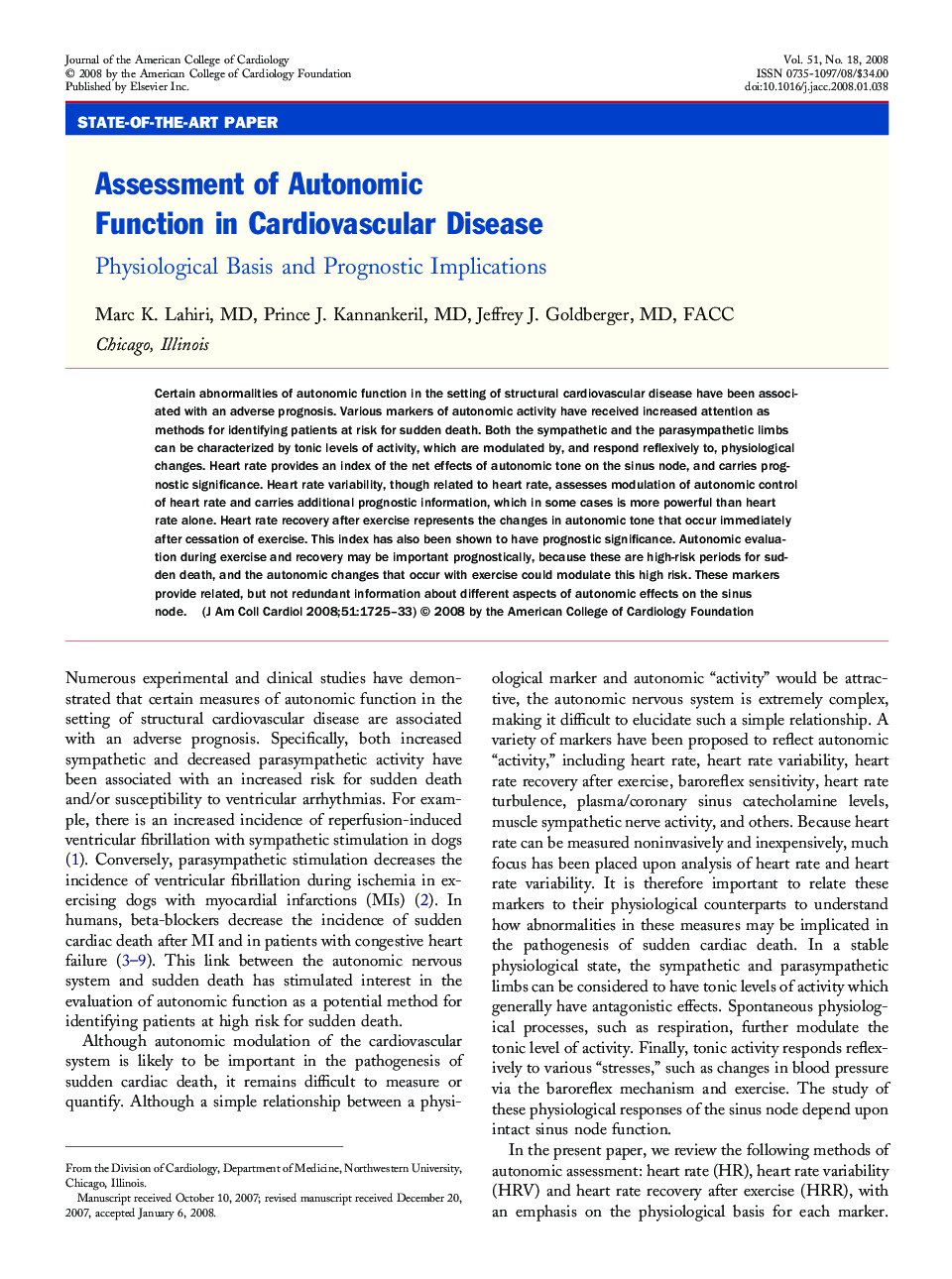| کد مقاله | کد نشریه | سال انتشار | مقاله انگلیسی | نسخه تمام متن |
|---|---|---|---|---|
| 2952289 | 1577423 | 2008 | 9 صفحه PDF | دانلود رایگان |

Certain abnormalities of autonomic function in the setting of structural cardiovascular disease have been associated with an adverse prognosis. Various markers of autonomic activity have received increased attention as methods for identifying patients at risk for sudden death. Both the sympathetic and the parasympathetic limbs can be characterized by tonic levels of activity, which are modulated by, and respond reflexively to, physiological changes. Heart rate provides an index of the net effects of autonomic tone on the sinus node, and carries prognostic significance. Heart rate variability, though related to heart rate, assesses modulation of autonomic control of heart rate and carries additional prognostic information, which in some cases is more powerful than heart rate alone. Heart rate recovery after exercise represents the changes in autonomic tone that occur immediately after cessation of exercise. This index has also been shown to have prognostic significance. Autonomic evaluation during exercise and recovery may be important prognostically, because these are high-risk periods for sudden death, and the autonomic changes that occur with exercise could modulate this high risk. These markers provide related, but not redundant information about different aspects of autonomic effects on the sinus node.
Journal: Journal of the American College of Cardiology - Volume 51, Issue 18, 6 May 2008, Pages 1725–1733